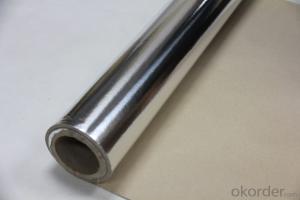Metal roofing has become increasingly popular in recent years, thanks to its durability, low maintenance, and energy efficiency. However, one common concern among homeowners is the insulation of metal roofs. In this guide, we’ll explore the best insulation materials for metal roofing, offering a comprehensive look at the options available and how to choose the right one for your home.
Why Insulate Metal Roofs?
Metal roofs, while incredibly strong and long-lasting, can sometimes be noisy during heavy rain or hail, and they may not provide the best insulation against temperature fluctuations. Insulating your metal roof can help reduce noise, improve energy efficiency, and create a more comfortable living environment.
Understanding R-Value
The R-value is a measure of thermal resistance, indicating how well a material can resist heat flow. The higher the R-value, the better the insulation. When selecting insulation materials for your metal roof, consider the climate in your area and the desired level of insulation.
Types of Insulation Materials for Metal Roofs
There are several types of insulation materials available for metal roofs, each with its own advantages and disadvantages. Let’s dive into some of the most popular options:
Fiberglass Batts
Fiberglass batts are a common insulation material found in many homes. They are made from tiny glass fibers and are available in various thicknesses. These batts are easy to install and can be cut to fit between the rafters or trusses of your metal roof. However, they may not provide the best insulation against heat and cold, and they can be prone to settling over time, reducing their effectiveness.
Cellulose
Cellulose insulation is made from recycled paper products and is an environmentally friendly option. It is denser than fiberglass batts, providing better insulation and noise reduction. Cellulose insulation can be blown into the attic space, filling gaps and crevices for a more consistent coverage. However, it can be more expensive than other options and may require professional installation.
Spray Foam
Spray foam insulation is a popular choice for metal roofs due to its excellent insulation properties and ability to seal air leaks. It is made from two components that expand upon contact, forming a tight seal around the roof structure. Spray foam insulation has a high R-value and can help reduce energy costs significantly. However, it can be more expensive and may require professional application.
Rigid Foam Board
Rigid foam board insulation is made from polystyrene or polyisocyanurate and provides a high R-value in a relatively thin profile. It is easy to install and can be placed between the rafters or trusses of your metal roof. Rigid foam board insulation is resistant to moisture and mold, making it a suitable option for humid climates. However, it can be more expensive than other materials and may not be as effective in areas with extreme temperature fluctuations.
Mineral Wool
Mineral wool insulation is made from rock or slag and is a fire-resistant option. It has good insulation properties and can be used in various applications, including between the rafters or as a sound barrier. Mineral wool is also resistant to moisture and mold, but it can be more challenging to work with due to its rough texture and potential health risks from inhaling fibers.
Choosing the Right Insulation Material
When choosing the right insulation material for your metal roof, consider the following factors:
1. Climate: The climate in your area will greatly influence the type of insulation you need. In colder climates, you’ll want a material with a high R-value, while in warmer climates, you may prioritize moisture resistance.
2. Budget: Insulation materials can vary significantly in cost. Determine your budget and choose a material that offers the best value for your money.
3. Installation: Some insulation materials are easier to install than others. If you plan to install the insulation yourself, consider materials that are more user-friendly.
4. Longevity: Look for insulation materials with a long lifespan to ensure your investment will last.
5. Environmental Impact: If you’re concerned about the environment, consider insulation materials made from recycled materials or those with low environmental impact.
DIY vs. Professional Installation
Deciding between a DIY installation and hiring a professional can be a tough choice. A professional installation will ensure proper application and a higher quality result, but it can also be more expensive. If you’re confident in your skills and have the necessary tools, a DIY installation can save you money. However, if you’re unsure or the project is more complex, it’s best to consult with a professional.
Maintaining Your Insulation
Proper maintenance of your insulation is crucial to ensure its effectiveness and longevity. Regularly check for signs of damage, moisture, or pests, and address any issues promptly. Additionally, ensure that your attic or roof space is well-ventilated to prevent moisture buildup.
In conclusion, insulating your metal roof is an important step in creating a comfortable and energy-efficient home. By understanding the different types of insulation materials, their R-values, and the factors to consider when choosing the right material, you can make an informed decision that suits your needs and budget. Whether you opt for a DIY installation or hire a professional, maintaining your insulation will ensure it continues to provide the benefits you’re looking for.

